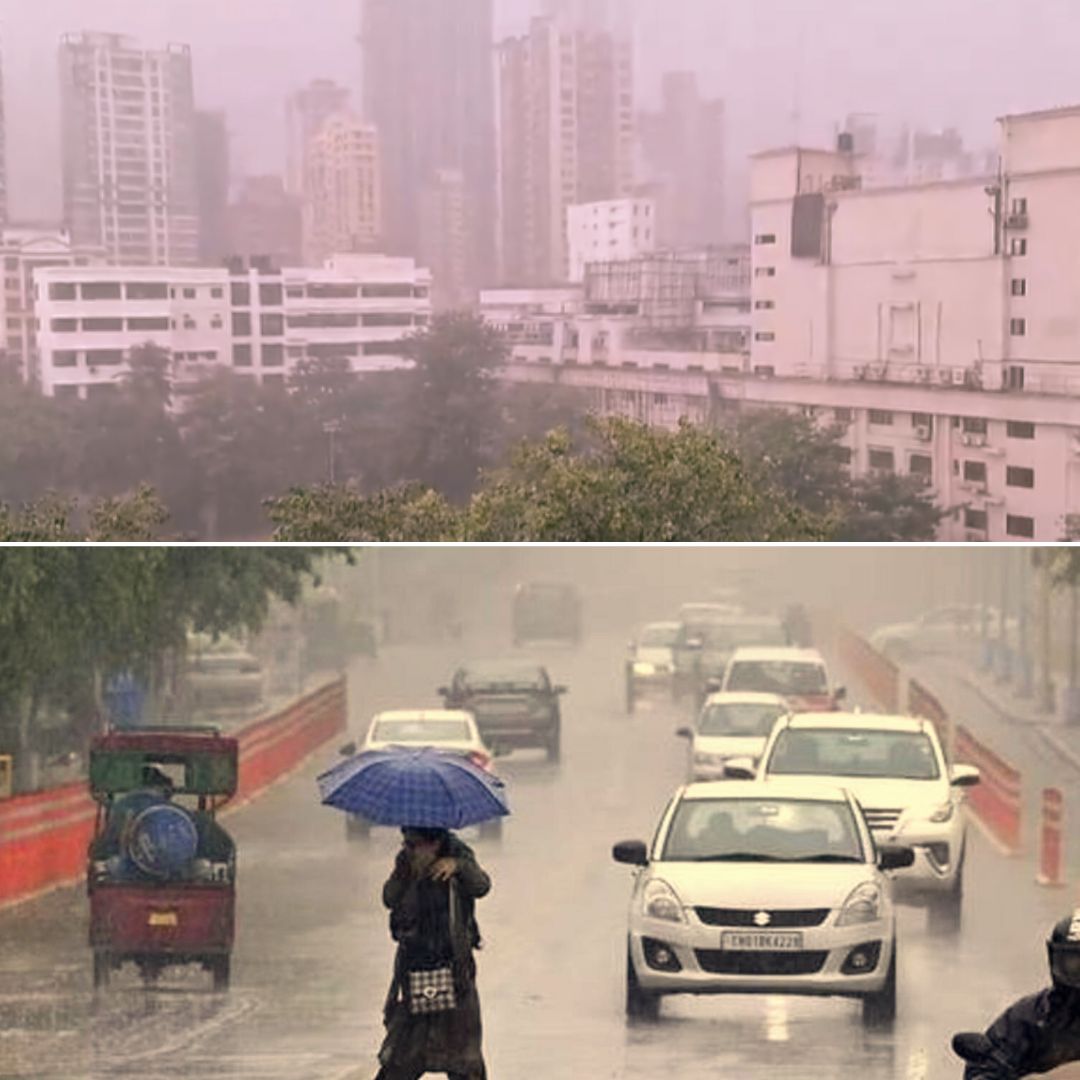India is currently experiencing a complex weather crisis, with the National Capital Region (NCR), including Delhi and Meerut, enduring a severe heatwave immediately following violent dust storms and hail on May 21.
Meanwhile, Mumbai and several western coastal states are facing sustained moderate to heavy rainfall and thunderstorms due to a developing cyclonic circulation over the Arabian Sea. The India Meteorological Department (IMD) has issued multiple alerts across these regions, forecasting extreme temperatures reaching up to 47°C in the north and heavy rainfall accompanied by strong winds in the west.
The storms in Delhi have resulted in two fatalities, widespread power outages, and significant disruptions to transportation. Authorities are urging residents to take precautions as emergency services remain on high alert, managing the challenges posed by these extreme weather events.
Northern Heatwave and Storm Aftermath Strain Delhi-NCR
On May 21, the Delhi-NCR region was hit by intense dust storms and hail, which caused severe damage including uprooted trees, power outages, and flight delays at Indira Gandhi International Airport. Tragically, two people lost their lives due to fallen trees during these storms. While these storms briefly lowered temperatures, the respite was short-lived.
By May 23, temperatures surged once again, with Delhi recording a high of 40°C and Meerut reaching 41°C. Forecasts predict that temperatures could rise to 45°C over the weekend, intensifying the heatwave. The IMD has issued a yellow alert, warning residents to avoid outdoor activities during peak afternoon hours and stay hydrated.
Dr Kuldeep Srivastava, head of the IMD’s Regional Weather Forecasting Centre, cautioned that vulnerable groups, including the elderly, children, and outdoor workers, need to be especially careful. Local authorities have set up cooling centres and are distributing water and oral rehydration salts to affected communities to help mitigate the effects of the heatwave.
Western Coast Battling Heavy Rains as Cyclonic Circulation Intensifies
At the same time, Mumbai and neighbouring coastal states such as Maharashtra, Goa, Karnataka, and Gujarat are contending with moderate to heavy rainfall caused by a cyclonic circulation developing over the Arabian Sea. The IMD expects this system to strengthen into a low-pressure area by May 23, which could lead to more intense rainfall and strong winds reaching speeds of up to 60 kmph.
Mumbai’s Santacruz observatory reported 62 mm of rain in just one day, resulting in localised flooding, waterlogging, and significant traffic congestion, particularly in low-lying areas like the Andheri subway. Authorities have issued warnings to coastal residents and fishermen, advising them to stay away from rough seas until conditions improve.
Furthermore, the IMD has revised the Southwest Monsoon forecast, predicting an earlier onset between May 24 and 25 over Kerala. This early arrival is expected to bring widespread rains to southern states, including Karnataka and Tamil Nadu, over the coming week. Meanwhile, orange alerts for heavy rainfall remain in place for several districts of West Bengal, with the potential for flash floods and landslides in vulnerable areas.
Just now Delhi witnessed a massive dust storm followed by rain and hail. The power of nature is on full display #delhirain ⛈️
— Weatherman Uttam (@Gujarat_weather) May 21, 2025
"From dust storm to heavy rain and hail – #Delhi's weather is going to change dramatically tonight 🌪⚡️#delhirain #DelhiWeather pic.twitter.com/FLatYfSEap
The Logical Indian’s Perspective
The stark contrast between the extreme heatwaves in northern India and the heavy monsoon rains along the western coast highlights the increasing unpredictability and severity of weather patterns due to climate change. Such rapidly shifting conditions pose serious challenges for urban infrastructure, emergency response systems, and public health.
It is crucial for governments and communities to strengthen resilience by investing in sustainable urban planning, early warning systems, and community awareness programs. Equally important is the support for the most vulnerable sections of society—daily wage earners, children, elderly citizens, and outdoor workers—who bear the greatest burden during these crises.
The Logical Indian urges readers to reflect on how prepared their communities are to cope with extreme weather events and invites constructive dialogue on measures that can be taken to improve safety and resilience. How can your community better anticipate and manage these climatic extremes? What steps can individuals and authorities take to protect vulnerable populations? Share your thoughts and experiences with us below.
Thunderstorms and dust storms coupled with heavy rain wreak havoc across Delhi-NCR, uprooting trees and mangling sign boards.#delhirain #DelhiWeather pic.twitter.com/duY0nhOhIs
— Mr. J (@LaughingDevil13) May 21, 2025












